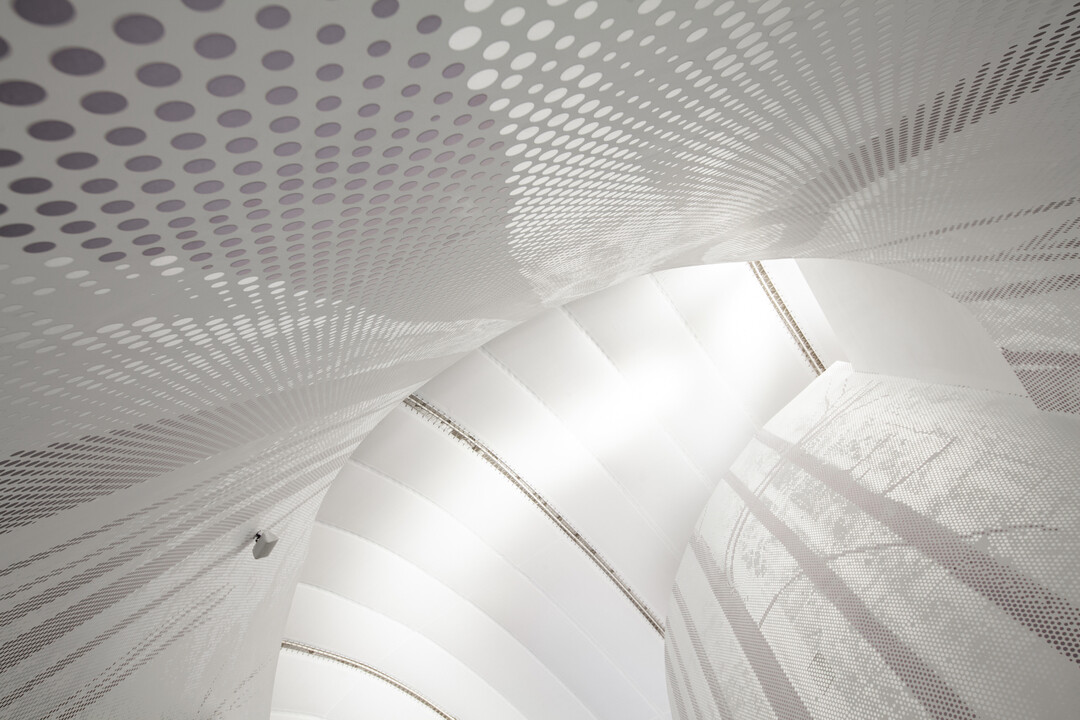
Members Only
Please join as a member and click "Members Only" to read more complete articles and exclusive content.

Please join as a member and click "Members Only" to read more complete articles and exclusive content.
蒙特婁自然
生態博物館
KANVA翻新自然生態博物館,締造人與自然的平衡。來自加拿大蒙特婁的KANVA設計事務所,擅長超越建築造型與形式局限,為案件賦予豐富意義,因而遠近馳名。最近事務所重新改造蒙特婁生態博物館(Biodome),採用精緻細密的設計手法,讓參觀者能沉浸於真正的多元生態系統環境中。
蒙特婁生態博物館原為1976年蒙特婁奧運會的自由車競賽場館,經改造之後,於1992年開幕,吸引大量參觀人次,為加拿大諸多博物館中的佼佼者。此次KANVA接下翻新改造的委託。「我們的任務,是強化訪客沉浸於獨特生態系統的體驗,並改造建築物的公共空間,」本計畫主建築師拉米・貝巴韋(Rami Bebawi)說,「如此一來,我們將擁抱生態博物館所扮演的重要角色,讓人能感受到自然環境的錯綜複雜,這在當前氣候變遷的背景之下尤為重要,還能讓民眾了解氣候變遷帶來哪些重大影響。」
令人平靜的核心區域
此建築原有的大型開放空間,如今是博物館中,不同生態系統之間的核心場域。KANVA以富有生命的柔軟皮層,包覆於生態系統周圍,引導動線同時亦伴隨著參觀者。這純白、親生物設計的預鑄皮層是相當複雜的結構工程,尤安裝時更是艱鉅任務。沒有犯錯空間,必須運用張力、懸臂與三角樑懸吊起來,在弓形的鋁結構周圍彎曲與延伸,並與建築本身的主要鋼構整合。過程中亦採用機械式連結,便於進行現場調整的各種移動。此一半透明皮層與上方天窗和諧互動,傾斜的地平線可傳達出寧靜與無窮之感。新的核心場域讓參訪者從原本純然中立的環境,轉換到鄰近生態系統的多重感官探索,強化了五感體驗。
接下來,KANVA把重點放在走訪生態博物館的旅程本身,並設計出新通道,將原有的探索路線轉換為更動態的體驗,參觀者可自行掌控穿過館內五大生態系的旅程,館內有逾二十五萬隻動物與五百種植物品種。因為設計概念的目標,在於更沉浸式的體驗,因此KANVA注重營造出感覺,讓視覺能超越聲音、氣味與觸覺,進而無限延伸。在使人寧靜的入口大廳,宛如有生命的波浪狀皮層將帶領訪客進入十公尺的隧道,來到中央核心,探索五大生態系統:熱帶雨林區、羅倫森楓樹林區、聖羅羅斯灣區、亞南極島嶼區、拉布拉多海岸區。
設計是不斷學習的過程
在設計新水池,供館內的企鵝使用之前,KANVA事務所的職員曾先投入幾週的時間,向生物學家和獸醫請益,了解物種的游泳模式。為了賦予觀測點更真實的感受,讓參觀者觀察河狸在自然棲地的狀態,事務所也研究河狸的建築技能。後來,事務所靈光乍現,讓河狸自行鑿木頭,之後將木頭乾燥,鋪設空間的內部。「在開始設計環境、讓周圍有諸多活生生的物種與我們共處之前,必須要先接受教育,也要秉持謙卑的心,」貝巴韋解釋,「在為其他人設計建築時,我們會把一些基本假設視為理所當然,但是為海獺或樹懶設計時,得重新教育自己。」整體的設計經驗也讓KANVA事務所的旅程更豐富。教育過程讓事務所能更進一步探索建築物,不把建築視為阻檔外力的屏障,而是變得更具滲透性,成為人與自然和諧共存的空間。